SPSP: How would you describe your research?
Kevin: I would call it a cross between several types of qualitative methods. A lot of it was interviewing and ethnographic work, as well. Let’s say I was researching neo-Nazis. I’d go to rallies (they knew I was a social scientist, and that I didn’t believe in their views.) I would go and interview there, and observe what was going on at the events and take notes. And once I got to know some of them and know where their hangouts were, I’d go there and do interviews, so it was both qualitative and ethnographic.
I got involved with this research because I was teaching a class on deviance and the issue of hate groups came up. Some of the kids in the class were talking about Neo-Nazi skinheads, and I responded back, “Well, not all of them are Neo-Nazis, there are several different types.” I described the Traditional and SHARPS (Skinheads Against Racial Prejudice), and a bunch of other types of skinhead identities.
After the class was over, two female students came up to me and said, “I want to thank you for actually clarifying to people that not all skinheads are Neo-Nazis.” They admitted that they were skinheads and that their boyfriends were skinheads, and they asked me if I would be interested in interviewing them because they knew I was doing research on the skinhead movement.
I said, “Sure,” and from there it all snowballed into meeting other people, getting contact information from them, and emailing or going to bars with them and meeting people or going to rallies. It really was this huge snowball effect that started with having a discussion in class about the definition of skinheads.
SPSP: When you’re doing these interviews and other types of communication, what’s the area of focus?
Kevin: It depends. One of the things that’s fascinating is what they would label as being a “true” skin. There’s a debate within the movement of what’s true. A Traditional skin might be more accepting of a gay skin than someone who is a Neo-Nazi. There’s also differing views on gender. Some skinheads have traditional views of women and basically believe that women should have more of a back-seat role, and some are more liberal in their views.
Robin: I think you see that with the female Neo-Nazi skinheads, too. Some of the Neo-Nazi women Kevin interviewed were very upfront that they wanted to be involved in, and sometimes were involved in, fighting.
There can be a lot of aggression, especially among the Neo-Nazi skinheads. Some of the women were okay with women fighting, and some of the men were okay with that. And some of the men said, “Women shouldn’t be fighting”, and even some of the women themselves said that they should take more of a backseat role with that.
Another question we look into is how different people got involved in the skinhead movement - what brought them to it. There are some commonalities across the board, and also differences. I think a lot of people who join feel that they are accepted for who they are within the movement. They’re looking for a place to belong. A lot of times, they feel like they didn’t fit in in high school, and yet they fit into the skinhead group.
Kevin: Both males and females join the skinhead movement because of issues of self-worth and self-esteem. A lot of them came from a background of being seen as blending into the crowd, and almost being a nothing. They wanted to stand out, so they ended up joining the movement. Then, they found that people feared them. And there’s kind of a power in fear. A lot of the women really liked that, because they were able to find a “true self”. They were finally accepted for who they were, in a way.
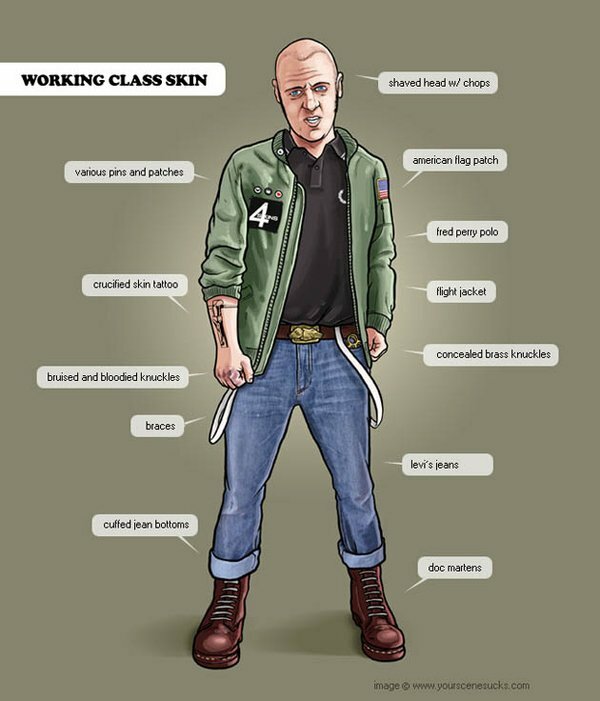
SPSP: That’s really intriguing. I don’t know that I would have thought about all of the nuances on my own.
Kevin: I didn’t either, and that was some of what surprised me. When you do reading on skinheads, you almost think that it’s homogenous. I found out there were different types of skinheads, with different reasons for joining. I did boil it down to several elements that were very similar, and one similarity is the issue of self-esteem.
A lot of skinheads weren’t recruited, per say, but willingly joined. They liked what they refer to as the respect they received. Like I said earlier, I refer to it as fear, but there’s power in that. For a lot of them, they’re only involved with the movement for a short time and then they move off into other things, but it increases their self-worth. I didn’t expect to see some of the results that I did.
Robin: Interestingly, too, one of the ways in which people are brought into the movement is through music. Whether they’re Traditional skinheads and they’re listening to ska and reggae, or they’re Neo-Nazi skinheads and they’re listening to the white power music, people would show up to the music venue to listen to the music. They’d meet people there, and hang out with them, and then join the movement. So music is one avenue in.
Kevin: At these music events and even in other spaces, sometimes people who are non-racist will hang out with people with racist views. I don’t hang out with anybody who’s racist because I don’t agree with that viewpoint. But because there’s so few skinheads and there’s power in hanging out in a pack, they basically tolerate this issue of bigotry and homophobia, etc.
I found it surprising that this happens, especially because there’s a whole SHARPS (Skinheads Against Racial Prejudice) movement. But for the most part, that movement has died down in America. I saw a lot of skinheads who would hang out with the racists, and I was amazed that they would tolerate that.
SPSP: How did you come to pursue this area of research? Were you studying this prior to the interaction with the two students?
Kevin: I was at Northeastern University and was a teaching assistant to Jack Levin, so I got interested in hate groups. When I started my dissertation in the late ‘90s, the internet was becoming big, and there was an influx of hate groups going online. I wanted to do a comparison of the online views of skinheads versus the face-to-face views of skinheads. That’s how I originally got into this research area, and I stumbled into a bigger avenue of people to interview.
Robin: My research with Kevin started with online hate, and moved more to looking at skinheads and the different types of skinheads. When I started doing the research, I thought of skinheads as Neo-Nazis and bikers. I started learning about the other groups, like the Traditional skinheads, and that they are around the world.
A lot of people trace the movement back to England, and say it came to the U.S. on the heels of punk rock. But there are skinheads in Korea, Japan, Australia, Germany, France, South America. It’s one of England’s most successful exports – it exists today and around the world.
I found a group of Straight Edge Skins Against Animal Cruelty, and they had a whole bunch of songs in that arena. There are female skins and gay skins, which kind of goes against the masculinity that’s associated with the group. Even though it’s a subculture, it’s a really diverse group.
SPSP: What about your research and your findings have been most surprising?
Kevin: For the females, the juxtaposition of the two roles. Some women take on a more traditional role and let the men do everything, and there are other women that are a little more standout-ish, and some of the other skins are a little more liberal in their views, and let them do their stuff. A lot of people refer to it as female masculinity.
One thing that I found was that regardless of gender or political affiliation, they’re extremely violent and you have to be really careful when you’re dealing with them. That transferred over into the women, as well.
If you look at violent crimes in general in the U.S., women only commit 13% of violent crimes. And yet, I don’t think I met one who woman didn’t have a violent extreme view on something, or who didn’t believe that you could act violently as a means to an end. I was expecting to find something a little bit different based on how the larger social structure is and how women view violence.
Robin: Some of the gay skins probably downplay their gay identity. But even among those who downplayed that identity within the skinhead movement, their close skinhead friends all knew that they were gay and yet a lot of their family didn’t. They felt comfortable telling these friends, but not their family. It’s really men acting feminine that they’re against, so even some of the gay skinheads beat up men who were acting effeminate.
Kevin: You saw that across gender, too. Some female skins didn’t see that kind of violence as being wrong. But sometimes it’s tough to tell how people really feel. You’re dealing with a lot of different views and the people all hang out. You don’t know if they’re just ignoring the behavior. But they never really espoused that beating up gay people was wrong, regardless of which gender they were.
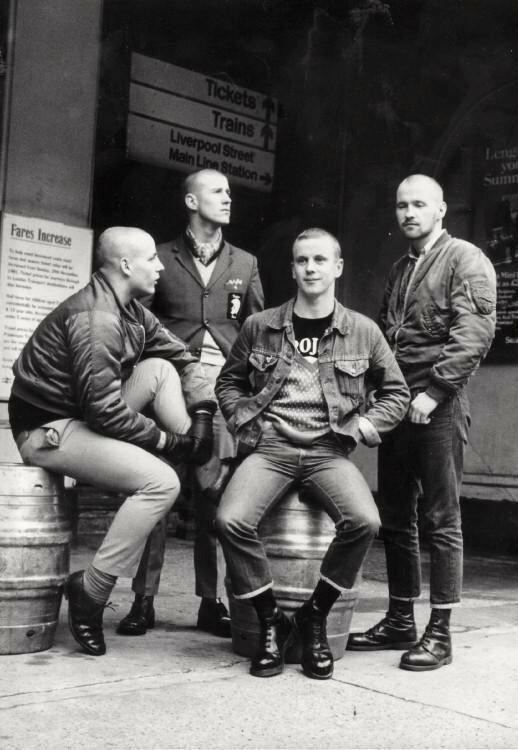
SPSP: What have you found most interesting about the research and your findings?
Kevin: I think what I found about how, let’s say women, get involved in the movement. A lot of it involved networks of relationships. So maybe they had a boyfriend or an older brother or another female friend that was in it, and they were drawn into it. If they become a neo-Nazi or racist skin, then they learn to hate. They get involved because it increases self-worth, so for them it’s more important to have that self-esteem and sense of pride. And they learn to hate later.
Whereas a lot of the males were attracted to the violence. For women, violence wasn’t an attractive component of it, but for a lot of the males, the violence brought them in.
Robin: The stereotype is the neo-Nazi skinhead, but I find commitment of the Traditional skinheads to “This isn’t about politics or racism; those things don’t have a place in the movement,” to be really interesting. Because it’s a subculture, you might expect much more homogeneity. But it’s a diverse group in terms of political beliefs.
And that’s true even in the women: you have women who are Traditional skinheads, women who are neo-Nazi, and so on. You see it just as you do in women outside of the subculture - very different views about race, politics, and aggression. The women in the movement reflect the larger group of women.
In the subcultures you can see women struggling for equality. In some skinhead groups they are treated as equals, and in others they have to fight to be treated as equals. That fight is not just with men - it can be with other women. I think you see the same thing in the larger society; some people are very accepting of women being treated as equals, and some say “No, they’re not.” And some people in each of those groups are men, and some of them are women.
Kevin: Some sociologists say if you understand subculture and deviance it’s easier to understand the larger society. If you look at what Robin’s talking about with women in the movement, it’s a subset of what’s going on in society. Women are fighting for rights, saying they should be able to do various things, or to go into combat. Combat is violent. It’s a microcosm within skinhead culture.
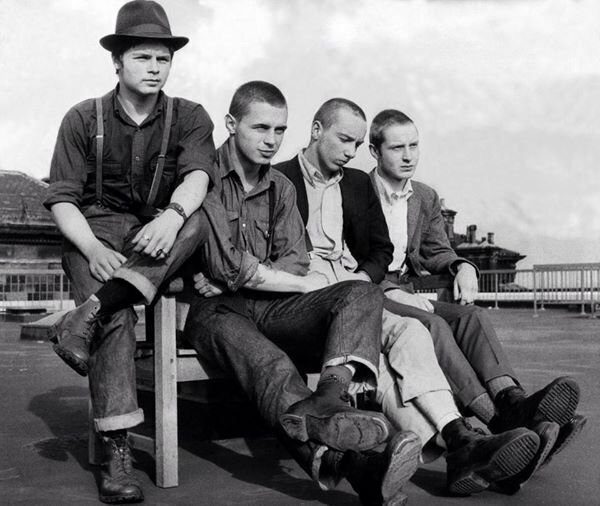
SPSP: What are the different groups of skinheads, in addition to traditional, neo-Nazi, and SHARPs?
Kevin: In Europe you get anarchist skins, red skins that are for communism and socialism. I haven’t run into that in the U.S.
Robin: In Europe, there’s also anti-Fascist skins.
SPSP: The red skins would seem to be on the left side of the political spectrum, but overall the movement, even if it’s nuanced, seems to be more to the right. Or is that not an accurate characterization?
Robin: Obviously, the racist nationalist skinheads are going to be on the right. And numerically, they are probably, at least in the U.S., more common than the extreme left. Although, as I mentioned, I did find the Straight Edge Skins Against Animal Cruelty, so you do have some left-leaning ones, and then the Traditional skins are more in the middle.
Kevin: Some of the Traditional skinheads still had elements of patriarchal views of women, and things of that nature, which aren’t very liberal. But they don’t consider themselves to the right of the spectrum, either. I think a lot of them wouldn’t really put themselves on the spectrum, partly because when people say “skinhead,” the first thing people think is Neo-Nazis.
They don’t want to be seen as totally to the right or left. A lot of them tend to take a neutral stance and don’t want to discuss politics. Some of them always say, “No politics allowed.” But views are expressed around violence. Some women are praised for their violence, and the attitude is, “You want to be violent? Go ahead and express yourself that way, that’s what the skinhead movement is all about. “
Others were more traditional towards women – “We’re supposed to protect them,” etc. And the women who were violent were almost chastised. So in the Traditional movement, you have people who lean a little more to the left in terms of self-expression. And others who think women shouldn’t fight. And they’re all tolerated - they don’t get into fights with each other about it.
Robin: The skinhead movement started as very working-class. “We’re working-class and we’re proud of who we are.” It goes back to what Kevin referenced earlier, the discussion of the definition of a skinhead.
Some people see it as being who you are, being true to yourself. Gay skinheads would say, “I am a true skinhead because being gay is who I am, and I espouse all of the working-class things that go along with being a skinhead.”
Others don’t think that gay people should be in the movement. They would say that being a true skinhead doesn’t include being gay. So it comes back to who gets to claim, “I’m a real skinhead,” and what does that mean?
Kevin: That’s the whole battle going on. Some of the skinheads in America embrace coming from England. But if you talk to the racist skins, a lot of them say the movement didn’t start until the 80s, when it came over on the back of the punk movement.
The definition of who is a true skin is probably one of the most interesting things of dealing with this culture, because everyone says “A skin would do this”, “No, a skin would do that”. The definition is always in flux. It’s never a solid thing that you can point a finger at. If you look on paper, that’s never really explored or brought out. I think that’s one of the interesting things we found.
SPSP: Thank you so much for your time.
.png.19eb16b991c78e03b20d7e99f96f36cc.png)
















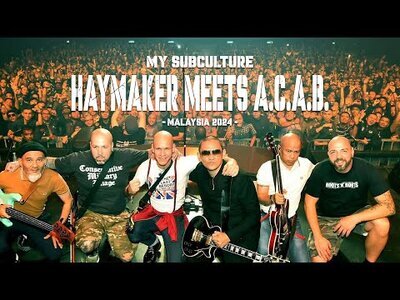
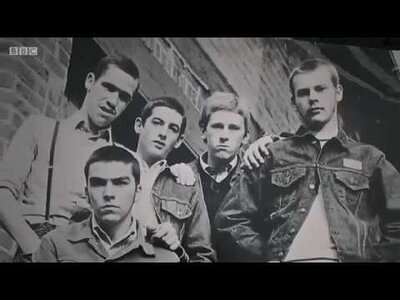







Recommended Comments
Join the conversation
You can post now and register later. If you have an account, sign in now to post with your account.